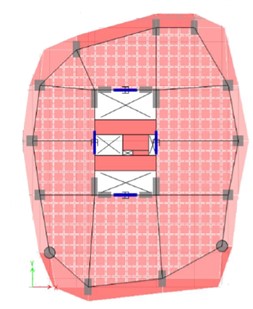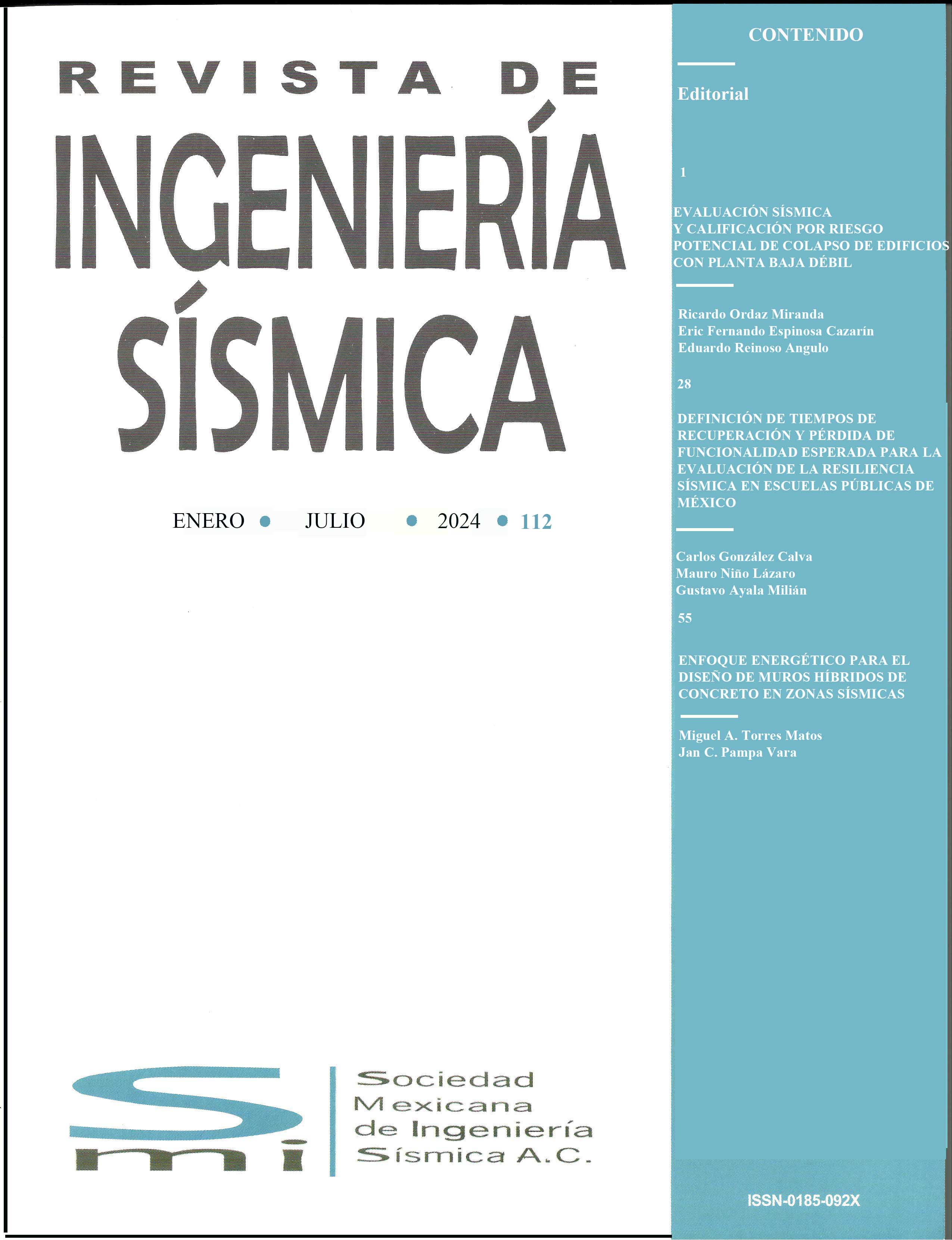A SIMPLE METHOD TO CONSIDER STRUCTURAL IRREGULARITIES IN EARTHQUAKE-RESISTANT DESIGN OF STRUCTURES. APPLICATION TO COMPUTING FLOOR ACCELERATIONS FOR THE SEISMIC DESIGN OF DIAPHRAGMS AND NONSTRUCTURAL COMPONENTS
DOI:
https://doi.org/10.18867/ris.111.662Keywords:
earthquake-resistant design, structural irregularities , floor accelerations , diaphragm design , nonstructural componentsAbstract
The 2017 Mexico City Seismic Building Code (MCBC. 2017) and the proposal for the 2023 Mexico City Seismic Building Code (MCBC, 2023) have specific seismic design procedures for considering different structural vertical and horizontal irregularities. The specifications of these norms for defining horizontal seismic floor accelerations are excessively elaborated. The values of these accelerations are needed to determine the design seismic forces in diaphragms and nonstructural components. In the case of irregular structures, the MCBC 2017 specifies elaborated procedures for computing floor accelerations that are pretty different from those set for regular structures and also very different from those specified in the ASCE 7-16 (ASCE 7-16, 2017) and ASCE 7-22 (ASCE 7-22, 2022) for buildings with irregularities.
For buildings with structural vertical and horizontal irregularities, this study proposes that the values of floor acceleration specified for regular structures are amplified depending on the assessment of the structural irregularities of buildings. This procedure was derived from studying the dynamic properties of 23 reinforced concrete buildings with earthquake-resisting systems based on frames or walls. These buildings were designed by Mexican consulting companies who obtained dynamic properties of these buildings. This paper offers simple examples using the proposed penalty factor for considering structural vertical and horizontal irregularities when computing floor accelerations. Results from these examples indicate several convenient features of the proposed design procedure, such as the consistency between the compute results and the expected seismic response of a structure, and because the ratio of seismic masses that uses the proposed procedure is a simple tool for identifying the importance of structural irregularity in a building.
Downloads
References
ASCE/SEI 7-16, (2016), “Minimum Design Loads for Buildings and Other Structures”, American Society of Civil Engineers. Estados Unidos.
ASCE/SEI 7-22, (2022), “Minimum Design Loads for Buildings and Other Structures”, American Society of Civil Engineers. Estados Unidos.
Das P., Dutta S. y Datta T. (2021), “Seismic Behavior of Plan and Vertically Irregular Structures: State of Art and Future Challenges”, Natural Hazard Review Journal, ASCE, 22 (2), 1-17
Chopra, A. K. (2012). Dynamics of Structures: Theory and Applications to Earthquake Engineering, 4th ed., Prentice Hall, Englewood Cliffs, New Jersey, 992 pp.
Mwafy, A. y Khalifa S., (2017), Effect of vertical structural irregularity on seismic design of tall buildings”, Struct Design Tall Spec. Build., 26, 1-22, DOI: 10.1002/tal.1399.
NTC Sismo, (2017). Norma Técnicas Complementarias por Sismo. Gaceta Oficial de la Ciudad de México.
NTC Sismo, (2023). Propuesta de Norma Técnica Complementaria para el Diseño por Sismo, para discusión pública, junio 2023.
NTC Sismo, (2023). Norma Técnica Complementaria para el Diseño por Sismo, para discusión pública, Gaceta Oficial de la Ciudad de México, 6 de. noviembre 2023.
Lee, W. H., Jennings, P., Kisslinger, C., & Kanamori, H. (Eds.). (2002). International handbook of earthquake & engineering seismology, Part A. Elsevier.

Published
Versions
- 2024-03-20 (2)
- 2024-03-20 (1)
How to Cite
Issue
Section
License
Copyright (c) 2024 Journal Earthquake Engineering

This work is licensed under a Creative Commons Attribution-NonCommercial 4.0 International License.





